The need for an agile product owner is more urgent now than it has ever been.
More organizations are seeing the benefits of an agile methodology. Based on the 15th State of Agile Report from Digital.ai, between 2020 and 2021 alone there was a 49% increase in agile adoption within software teams.
The same report goes on to mention that two-thirds of agile companies have experienced significant benefits when using agile. These include help with managing priorities, increasing visibility with customers, and aligning the business and software teams.
With agile growing to become such a crucial factor in a business’ criteria for success, recruiters need the best talent to turn a business’ product goals into reality.
The product owner is one such person who plays a critical role in the agile process.
If you’re interested in learning more about what product owners do via video, then watch below. Otherwise, skip ahead.
What does an Agile Product Owner do?
An agile product owner is a person who is responsible for maximizing the value of the products that an agile development team builds. Agile product owners are cross-functional professionals who interact with several departments and teams. These include product team members, the senior management team, product users, and other stakeholders.
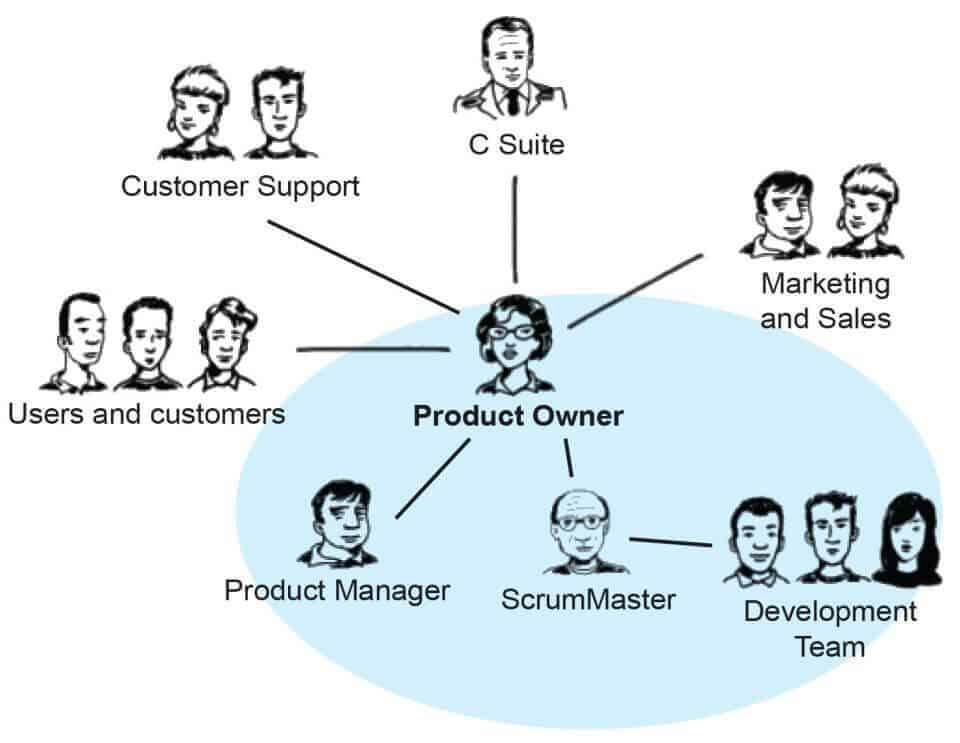
Through their interaction with various parties, agile product owners collect feedback, process it, and then prioritize it for the development team.
Because of their responsibilities, agile product owners play a vital and central role in the product development process. Not only are they cross-functional professionals, but agile product owners must also take on various roles. In some cases, they may own the entire product backlog. In other instances, they may manage the backlog of only a specific product feature.
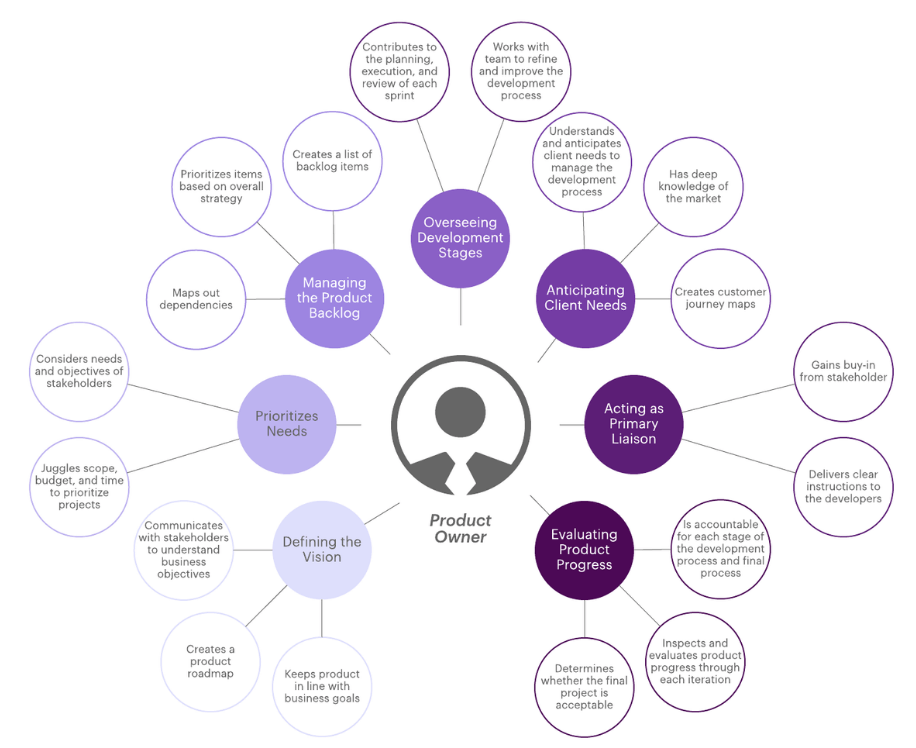
Let us take a closer look at what agile product owners do daily. To do so, we will divide our analysis into four main fields:
- Product Goals
- Product Backlog
- Transparency, Forecasting & Prioritizing
Agile Product Owner: Responsibilities
With that said, let us return to our discussion on the key roles and responsibilities of an agile product owner.
Let us begin by examining the responsibilities associated with product goals.
1. Product Goals
One of the primary things that an agile product owner has to do is to understand the vision and goals of a product.
Having clear goals ensures that the product management team members have a cohesive understanding of what is expected from them. The agile product development team can easily veer off from its main objective due to the flexibility of the approach. With such a fast-paced development process, it is crucial to have a clear understanding of where the product team should be focusing their efforts on.
For that reason, the agile product owners decide both the product vision and its respective goals through a product roadmap. In most cases, a product manager also defines both the vision of the product and the objectives that come with it with the help of other scrum team members.
As the agile product owner, your responsibility is to internalize the product vision and the goals that the product manager has set for the product. This is crucial as it will lay the foundation for how you approach product sprint planning and backlog grooming.
If you lack clarity on the overall business strategy and goals for a given product, you will struggle to prioritize and communicate tasks in a precise and efficient manner. Failure to understand both of these factors can delay the product team’s ability to meet its objectives and jeopardize the success of the product.
If you’re interested in learning the skills to become a great agile Product Owner, then check out our Product Owner Certification course.
2. Product Backlog
Most of a product owner’s responsibilities revolve around managing the product backlog.
The Scrum Guide defines a product backlog as an ordered list of tasks that the team needs to perform to meet a particular product goal. Each task in the backlog is a standalone iteration that is performed by the Agile team.
The product owner plays a significant role in the creation and evolution of the product backlog during its respective lifecycle. For starters, they refine the product backlog. This process is also known as backlog grooming. Here, the product owner examines the various tasks in the backlog and rearranges them based on urgency, priority, or logistics.
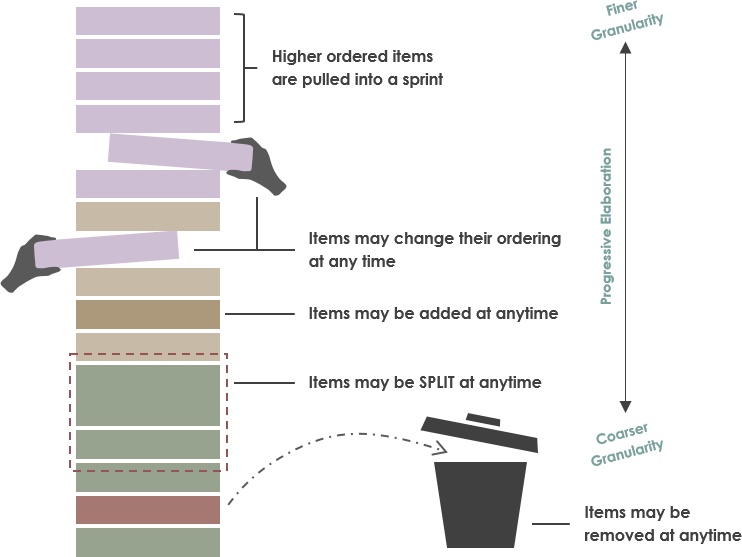
An agile product owner may also modify tasks or add descriptions or details to already existing tasks.
In doing so, the product owner has to groom the backlog in such a way that it communicates the requirements and descriptions clearly and concisely. As a customer representative, their communication skills must be top-notch.
Scurm.org has included a visual depicting how product owners should order their product backlogs based on sprints.
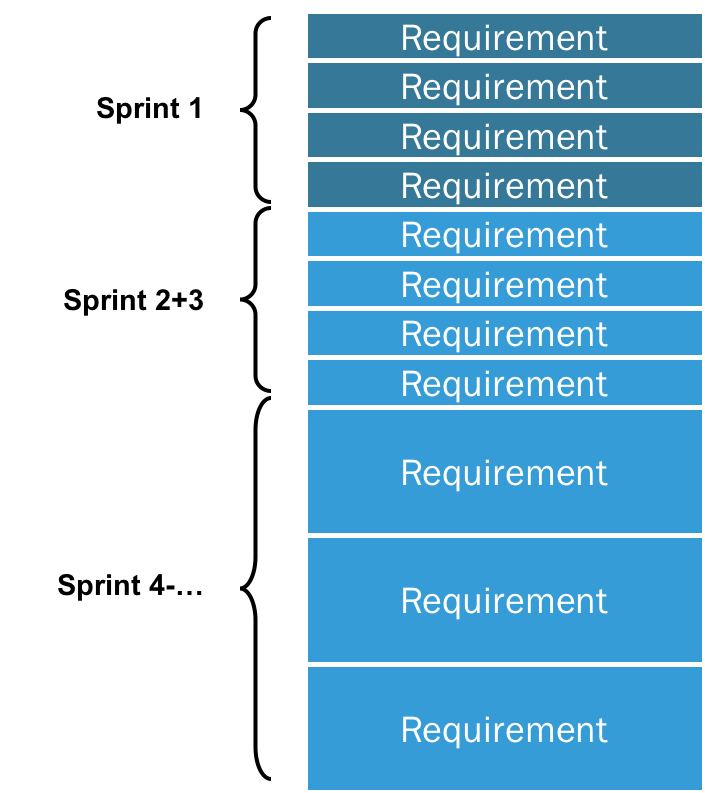
The items that are ready for the next Sprint (defined as one iteration of the development cycle in scrum and agile development). Sprint has a fixed length that is repeated over and over again.
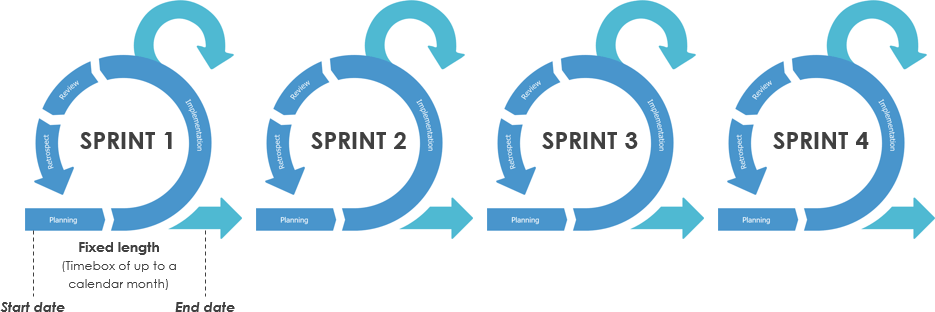
The fixed duration of the sprint ensures that the development is predictable and the product owner knows when the product will be available. The efficiency of the product owner has a direct impact on the efficiency of the development team.
3. Transparency, Forecasting, & Prioritizing
In doing so, the product owner must practice transparency. This means that the processes and work must be visible to all the stakeholders. This includes both those who are performing the tasks in the product backlog as well as those who will receive it, such as the client, customer, or user. With their product owner skills and a customer-centric mindset, they understand both customer and stakeholder needs
There are several techniques a product owner can use to ensure transparency:
- Work side-by-side with the development team and other stakeholders
- Encourage and promote a feedback culture
- Share progress with all the stakeholders at each development stage
- Communicate and collaborate with the development team, the Scrum Master, and all the stakeholders
- Continuously improve the software development and technical capabilities via feedback from user stories
- Target business objectives in collaboration with business managers to increase business value
Here is a transparency evaluation template that helps an agile product owner evaluate the level of transparency they exhibit.

The agile product owner must also predict the factors that will influence both the product’s creation as well as the development team’s ability to meet their objectives.
The initial scope of the project is insufficient for the product owner to prioritize tasks. After all, internal and external factors alike both have an impact on how the product team needs to approach product design and development. Smart agile product owners stay in contact with all stakeholders throughout the process. Based on the feedback you get, you then modify the product backlog to reflect the short-term and long-term needs of the product.
Scrum Product Owner vs. Agile Product Owner
Before we dive into those responsibilities, it’s important to note that agile product owners and Scrum product owners are the same. This tends to be an area of confusion for recruiters and founders alike.
Scrum is a subset of the agile framework. It is a lightweight framework that is used to generate product value. Scrum framework is a 4-step process:
- The product owner orders the product backlog.
- The scrum team does one task at a time within a short space of time. This is known as a Sprint.
- The stakeholders along with the scrum team analyze the output and tweak it if necessary.
- Repeat.
The Scrum Guide defines the product owner as:
“The product owner is responsible for maximizing the value of the product resulting from the work of the entire scrum team.”
In this case, the product owner is called a Scrum product owner. Just like an agile product owner, they own the product fully. Their roles and responsibilities remain the same regardless of whether an organization uses the agile methodology or a variation of agile such as Scrum.
Key Takeaways
Agile product owners are no different from regular product owners. They are both responsible for managing and grooming the product backlog.
Since their role and responsibilities are crucial to the product team’s success, agile product owners need to be at the top of their game.
To be a successful agile product owner, you must be willing to learn and grow your skillset.
Be prepared, be willing to learn and evolve, and be ready to do what it takes to maximize product value.
FAQs
Here are answers to the questions that aspiring agile product owners frequently ask:
What is the product owner in an agile hierarchy?
In the agile hierarchy, the product owner is responsible for defining and prioritizing the product backlog. They act as the liaison between stakeholders and the development team, ensuring that the team delivers value to the customer.
Is an agile product owner like a project manager?
No, an agile product owner is not the same as a project manager. The product owner focuses on defining and prioritizing product features to maximize value, acting as the customer’s voice. In contrast, a project manager oversees project management, execution, timelines, and resources to ensure project completion.
What is the difference between a product manager and a product owner in Agile?
A Product Manager focuses on the overall product strategy, market analysis, and long-term vision across the product lifecycle. A product owner in agile is more tactical, managing the product backlog, and ensuring the development team delivers value in line with the product vision.
The product manager is broader, and the product owner’s success is more execution-focused in agile.
What is the difference between a product owner and a scrum master?
A product owner focuses on “what” to build, and the scrum master focuses on “how” the team works. A product owner defines and prioritizes the product backlog to maximize value and represent the customer’s interests. A scrum master facilitates the scrum process, ensuring the team follows agile practices, removing obstacles, and improving team dynamics.
If you are new to product ownership and are looking to break into a great product owner’s role, we recommend taking our Product Owner Certification Course, where you will learn how to guide PM projects using scrum foundations, how to lead certified scrum product owner teams and land a great product owner job.

